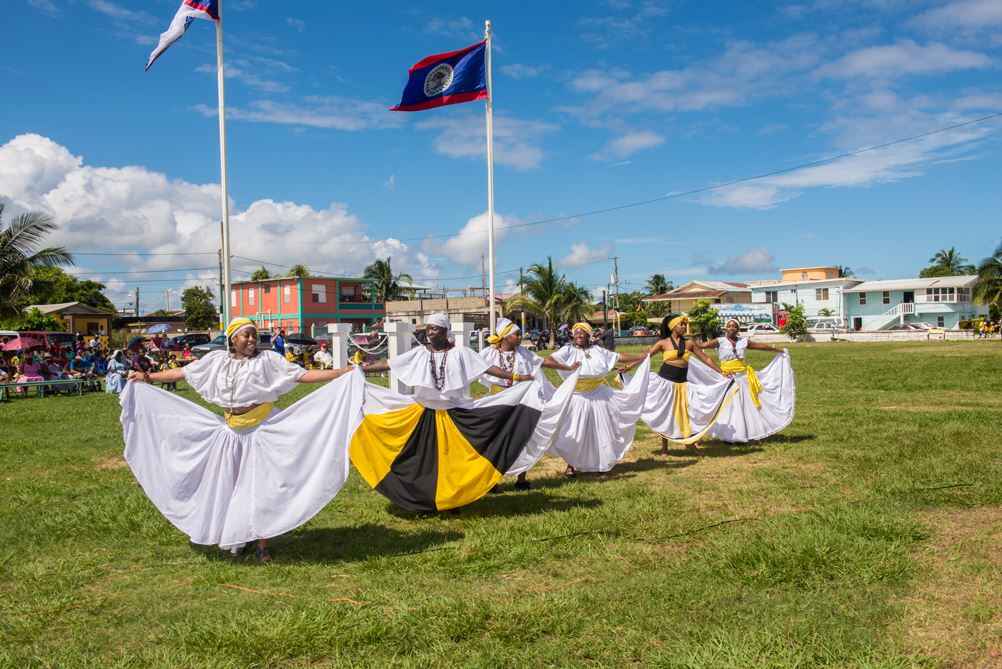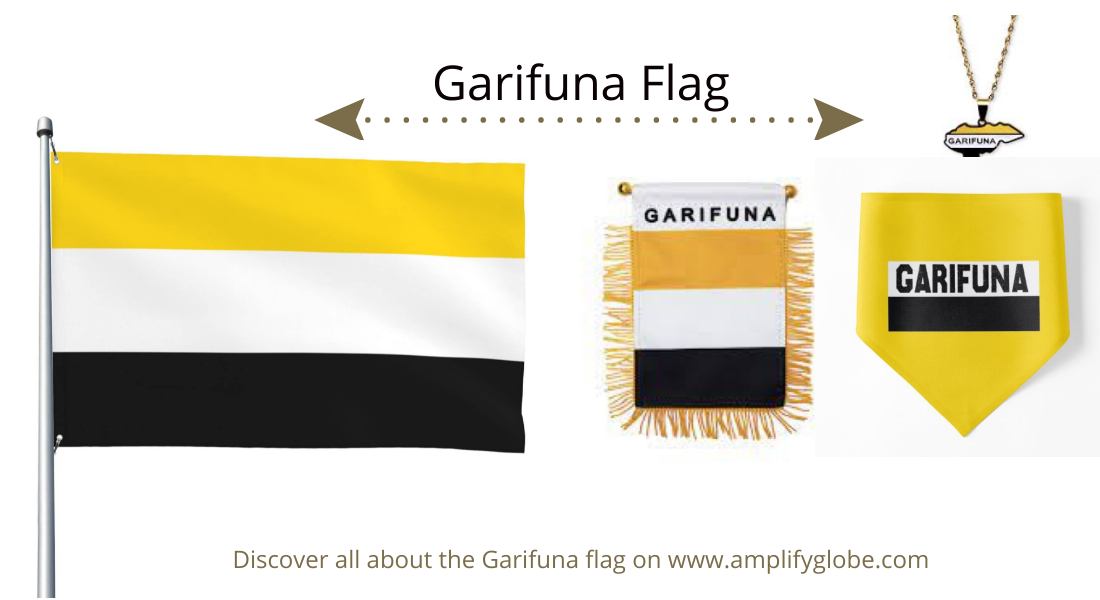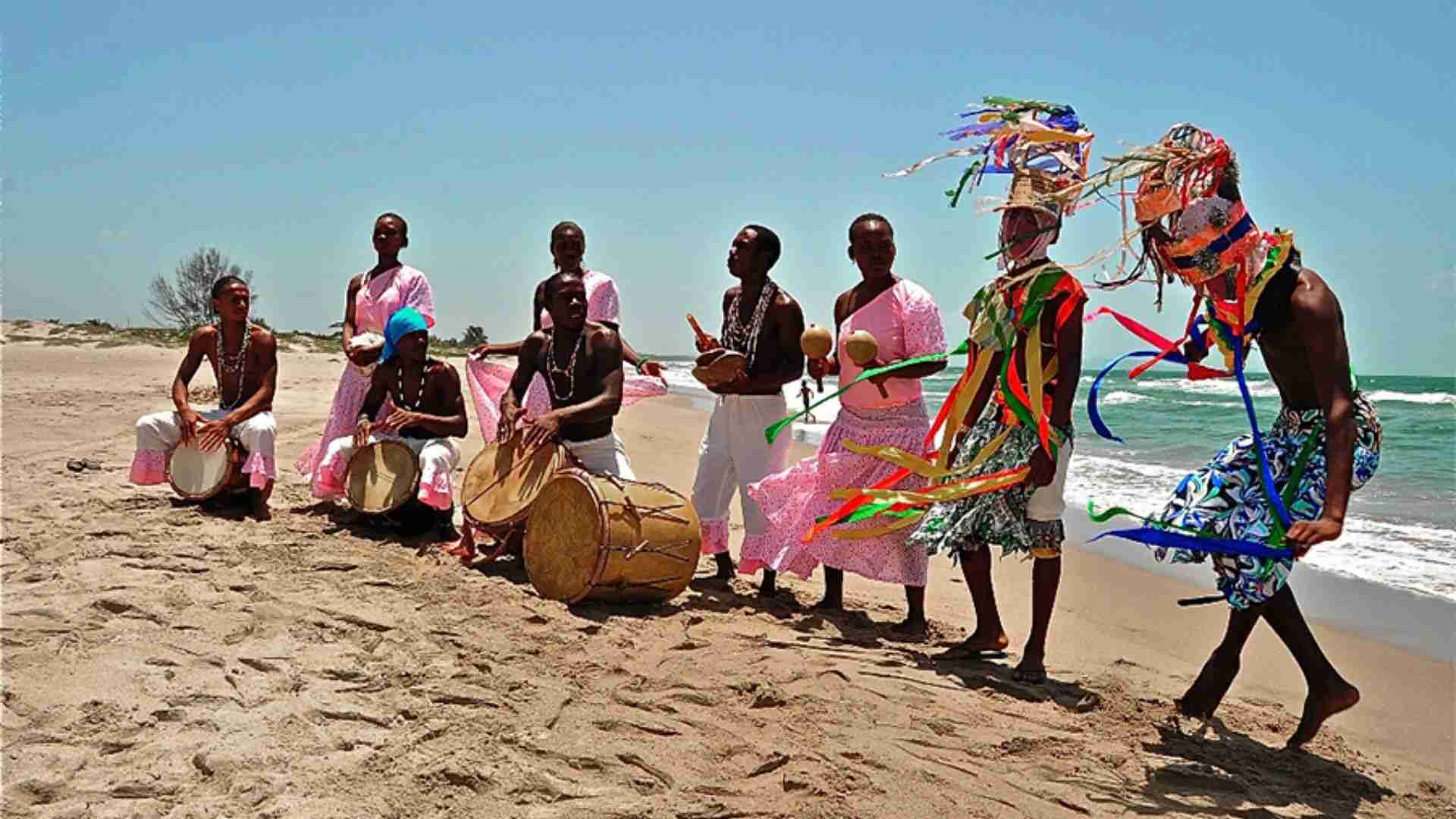The Garifuna: A Rich Culture of Weaving Tradition
The Garifuna people, a vibrant Afro-indigenous community, boast a rich cultural heritage that spans centuries. Nestled along the coasts of Central America, particularly in Belize, Honduras, Guatemala, and Nicaragua, the Garifuna have managed to preserve their unique identity despite the challenges of history. This article delves into the origins, history, language, music, dance, and the contemporary challenges faced by the Garifuna, shedding light on a culture that continues to captivate and inspire.

Historical Roots of the Garifuna People
The Garifuna people, with their vibrant culture and unique heritage, have a rich history rooted in the intricate tapestry of the Caribbean and Central America. In this exploration, we delve into the historical roots of the Garifuna people, tracing their journey from the early encounters with indigenous communities to the development of a distinct and resilient cultural identity.
The Arrival of The Garifuna People
The Garifuna people, also known as Garinagu, trace their origins to the intermingling of West African and Carib indigenous populations. The narrative begins in the early 17th century when West African slaves, bound for the Caribbean, found themselves shipwrecked off the coast of St. Vincent. This event marked the beginning of a profound cultural fusion that laid the foundation for the Garifuna community.
Cultural Fusion and Resistance
As the African survivors integrated with the Carib indigenous people, a unique and resilient culture began to emerge. The Garifuna people forged a distinctive language, dance, music, and spirituality, blending African traditions with elements of Carib heritage. Their resilience was further demonstrated through their resistance against European colonization, fiercely protecting their lands and cultural autonomy.
The Garifuna Wars
In the late 18th century, tensions between the Garifuna people and European colonial powers escalated, leading to a series of conflicts known as the Garifuna Wars. Despite valiant efforts to maintain their independence, the Garifuna were ultimately defeated by the British. This marked a significant chapter in their history as they were forcibly exiled from St. Vincent to the Central American region, including Honduras, Belize, Guatemala, and Nicaragua.
Settlement and Diaspora
The forced migration of the Garifuna people resulted in the establishment of vibrant communities along the coasts of Central America. They brought with them their language, Garifuna, which is recognized by UNESCO as a Masterpiece of the Oral and Intangible Heritage of Humanity. Over time, diaspora communities have also flourished in North America, particularly in the United States.
The Garifuna Language
The Garifuna people, with their vibrant culture and unique history, have enriched the cultural tapestry of Central America. At the heart of their heritage lies the Garifuna language, a linguistic gem that reflects the resilience and unity of this distinct community. In this article, we delve into the depths of the Garifuna language, exploring its origins, linguistic features, and the ongoing efforts to preserve this invaluable cultural treasure.
The Origins of the Garifuna Language
The Garifuna people are descendants of West African, Carib, and Arawak populations who intermingled on the island of Saint Vincent. Forced into exile by European colonial powers in the 18th century, the Garifuna found refuge along the coasts of Honduras, Belize, Guatemala, and Nicaragua. It is within this diaspora that the Garifuna language took root, evolving into a unique linguistic expression that encapsulates centuries of history and shared experiences.
Linguistic Features of Garifuna
The Garifuna language is a fusion of Arawakan and Cariban languages, reflecting the diverse ancestry of the Garifuna people. It incorporates vocabulary and grammatical elements from both language families.
Historically, the Garifuna language has been primarily an oral tradition. Traditional songs, dances, and storytelling play a crucial role in passing down linguistic nuances from one generation to the next.
Over the centuries, the Garifuna language has absorbed influences from European languages, particularly English and Spanish, due to historical interactions with colonizers. Creole elements contribute to the linguistic richness, creating a language that is both rooted in tradition and adaptable to evolving cultural contexts.
The Importance of Cultural Preservation of Garifuna Language
In 2008, UNESCO recognized the Garifuna language, dance, and music as Masterpieces of the Oral and Intangible Heritage of Humanity. This acknowledgment highlighted the importance of safeguarding and promoting the Garifuna linguistic and cultural heritage.
Despite its cultural significance, the Garifuna language faces the threat of endangerment due to globalization, migration, and the influence of dominant languages. Ongoing efforts are crucial to ensure the language's survival for future generations.
Preservation Efforts of Garifuna Language
Local educational programs and language courses aim to teach the Garifuna language to younger generations. Efforts focus on integrating the language into formal education systems to ensure its continuity.
Grassroots initiatives within Garifuna communities emphasize the importance of preserving the language as a communal responsibility. Language-focused events, workshops, and cultural festivals contribute to the ongoing revitalization efforts.
The Garifuna Flag and Its Cultural Significance
The Garifuna people, with their vibrant heritage and unique cultural identity, express their rich history through various artistic forms. At the heart of Garifuna culture lies the Garifuna flag, a symbol that encapsulates the essence and resilience of this Afro-Caribbean community. In this article, we explore the intricate details and profound meaning behind the Garifuna flag.
The Colors: A Tapestry of Significance
The Garifuna flag, characterized by its bold and distinctive colors, holds deep cultural symbolism. The tricolor design features black, white, and yellow, each color representing a facet of the Garifuna identity.

The black stripe represents the African heritage of the Garifuna people. It serves as a powerful reminder of their ancestors' struggles and resilience during the transatlantic slave trade.
The white stripe symbolizes the European influence on Garifuna culture. It signifies the fusion of African and Indigenous Caribbean roots with the arrival of European colonizers.
The yellow stripe represents the Garifuna sun. Beyond its literal interpretation, the sun holds cultural and spiritual significance, embodying warmth, vitality, and the interconnectedness of the Garifuna community.
The Dugú: Cultural Celebrations and Connection
Central to Garifuna culture is the Dugú, a festive and spiritual celebration that often involves the raising of the Garifuna flag. During the Dugú, the flag becomes a dynamic symbol, a visual representation of the community's collective identity and shared history. The vibrant colors sway in unison with the rhythms of traditional Garifuna music, creating a captivating spectacle that transcends generations.
The Garifuna Food
The Garifuna people, with their vibrant culture and unique history, have bestowed upon the world a culinary heritage that is as diverse as it is delicious. Rooted in the Afro-Caribbean traditions, Garifuna food is a delightful blend of flavors, reflecting the rich tapestry of their ancestral roots. In this article, we embark on a gastronomic journey to explore the distinctive and mouthwatering world of Garifuna cuisine.
The Essence of Garifuna Cuisine
Garifuna food is deeply intertwined with the coastal lifestyle of its people. Fresh seafood, tropical fruits, and locally sourced ingredients take center stage in their culinary creations. Staples such as cassava, plantains, and coconut form the foundation of many dishes, creating a symphony of tastes that captivate the palate.
At the heart of Garifuna cuisine lies Hudut – a fish and coconut soup served with mashed plantains. This dish is not merely sustenance; it is a cultural symbol, often prepared during special occasions and celebrations. The creamy consistency of the coconut broth complements the tender fish, offering a taste of tradition in every spoonful.
Machuca, a fisherman's delight, is a medley of fish, green and ripe plantains, yams, and other vegetables, simmered to perfection. This hearty fish soup showcases the Garifuna people's reliance on the abundance of the sea, creating a dish that is both comforting and nourishing.
Serre, a Garifuna delicacy, consists of seasoned fish or seafood wrapped in banana leaves and slow-cooked to perfection. The result is a succulent, aromatic dish that highlights the Garifuna mastery of seasoning and grilling techniques. The banana leaf imparts a distinctive flavor, making Serre a true embodiment of Garifuna culinary expertise.
Derived from the cassava root, Garifuna cassava bread is a fundamental element in their cuisine. The preparation involves grating and pressing the cassava to produce a flatbread that is then baked on a griddle. This versatile bread accompanies many Garifuna dishes and serves as a testament to the community's resourcefulness.
Ereba, a dish made from grated cassava, is akin to a flatbread or pancake. Often served with fish, Ereba showcases the Garifuna people's ability to turn simple ingredients into a delectable culinary experience. Its chewy texture and mild flavor make it a perfect accompaniment to various Garifuna dishes.
Preservation Efforts of Garifuna Language
Local educational programs and language courses aim to teach the Garifuna language to younger generations. Efforts focus on integrating the language into formal education systems to ensure its continuity.
Grassroots initiatives within Garifuna communities emphasize the importance of preserving the language as a communal responsibility. Language-focused events, workshops, and cultural festivals contribute to the ongoing revitalization efforts.
Musical and Dance Traditions: The Heartbeat of Garifuna Culture
Music plays a central role in Garifuna culture, acting as a vessel for storytelling and cultural expression. The drum, particularly the unique Garifuna drum known as the "segunda," resonates through their music, creating a rhythmic heartbeat that binds the community together. Punta, Paranda, and Wanaragua are among the traditional music genres that showcase the Garifuna's musical prowess, with each rhythm narrating tales of survival, love, and resistance.
Accompanying the vibrant music are the dynamic dances that form an integral part of Garifuna cultural expression. The Punta dance, characterized by rapid hip movements and intricate footwork, stands as a celebration of life and joy. Through dance, the Garifuna people communicate their history, struggles, and triumphs, fostering a sense of unity and solidarity within the community.

Contemporary Challenges and Preservation Efforts
While the Garifuna have successfully preserved their cultural identity over the centuries, they face contemporary challenges that threaten their existence. Issues such as land dispossession, economic marginalization, and discrimination persist, posing a threat to the continued vitality of Garifuna culture. Activists and community leaders are working tirelessly to address these challenges, advocating for land rights, cultural preservation, and social justice.
Land Dispossession: A Threat to Cultural Heritage
Land dispossession remains a significant challenge for the Garifuna, particularly in the face of tourism development and large-scale agricultural projects. The encroachment on traditional Garifuna lands not only disrupts their way of life but also jeopardizes the transmission of cultural practices and traditions from one generation to the next. Efforts to combat land dispossession include legal battles, grassroots activism, and international awareness campaigns.
Economic Marginalization and Cultural Erosion
Economic marginalization is another pressing issue that the Garifuna community grapples with. Limited access to resources and employment opportunities often forces community members to migrate to urban centers in search of better prospects. This migration, while providing economic opportunities, also contributes to the erosion of traditional cultural practices as younger generations find themselves removed from the cultural epicenter of their community. Sustainable economic initiatives within Garifuna communities aim to address this imbalance by promoting local businesses and preserving traditional livelihoods.
Discrimination and the Fight for Recognition
Discrimination against the Garifuna people is a harsh reality that extends beyond economic challenges. Linguistic and cultural discrimination persist in various forms, with the Garifuna language marginalized and cultural practices stigmatized. Advocacy for recognition and respect for Garifuna rights at both the national and international levels is gaining momentum. Through legal channels, educational programs, and cultural festivals, the Garifuna community is working to dismantle stereotypes and ensure the continued celebration of their cultural heritage.
Preserving the Future: Community Initiatives and Global Partnerships
Despite the challenges, the Garifuna people are resilient, and their determination to preserve their cultural heritage shines through in various community-led initiatives. Local cultural centers, language revitalization programs, and traditional arts and crafts cooperatives contribute to the preservation and transmission of Garifuna traditions. Furthermore, global partnerships with NGOs and cultural organizations play a pivotal role in raising awareness, providing support, and fostering sustainable development within Garifuna communities.
Tourism as a Double-Edged Sword
Tourism, while presenting economic opportunities, also poses a threat to the preservation of Garifuna culture. Striking a balance between cultural preservation and tourism development is crucial. Initiatives that promote sustainable and responsible tourism, such as cultural exchange programs and community-led tours, empower the Garifuna community to share their culture on their terms while maintaining control over its representation.
The Garifuna people stand as a testament to the resilience of human spirit and the power of cultural preservation. Their history, language, music, and dance paint a vivid picture of a community that has navigated through centuries of challenges, emerging with their identity intact. As the Garifuna continue to face contemporary threats, their unwavering determination to preserve their cultural heritage serves as an inspiration to the world. By acknowledging the challenges, supporting community-led initiatives, and fostering global partnerships, we can ensure that the Garifuna culture remains a vibrant thread in the rich tapestry of human diversity.
Embrace the beauty of cultural diversity and enrich your understanding of the world! Learning about different cultures is an enriching journey that broadens our perspectives, fosters empathy, and fosters respect for one another. It allows us to appreciate the unique traditions, values, and customs that shape the identity of various communities around the globe. Learn about the Hamer Tribe, the Hadza Tribe, the Sami, the Akha People, the Aymaraes, the Kazakh People and the Adivasi on AmplifyGlobe.